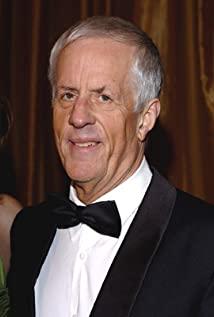Susan and Pete, who grew up in the first and second episodes and found their identity, disappeared in the third episode. They are the metaphors of adults in the children's world. After experiencing ups and downs and the test of time, they grow up to be beautiful, charming, sisters and brothers who have the responsibility to take care of their families. They no longer appear in children's adventure world. It has become a distant and adored and chased target for children who have not matured themselves.
[Divergence and unity of identity and self]
The identity confusion caused by environmental factors and social status appears at the beginning of the film. Edmund is the king of justice in Narnia, leading the army to invincible, and fighting side by side with the soldiers to overthrow the rule of the Snow Queen and bring a long-lost spring to Narnia. But in the real world, he was still a kid. Putting on an adult's clothes and holding a fake identity certificate hoping to join the army, he still can't escape the shackles of his current identity - "Edmund, shouldn't you accompany me to buy vegetables?" In the real world, he is A child living in an uncle's house, what he should do now is to take care of the housework. He completed a growth in the world of Narnia. He has overcome difficulties, crossed life and death, experienced betrayal, atonement and rebirth, so his self-positioning is - king. "But I'm the king!" "In Narnia." So he's lost in the real world, where his identity requires his self-positioning to be—good boy. What he should do is to obey the expectations of adults and the society's definition of a good boy, and he doesn't need him to take a knife and raise a sword and charge into battle. The world in which Edmund grew up affects his self-positioning, but self-positioning needs to be subordinated to the requirements of identity. Leaving the world of growth, self-positioning and identity requirements create a contradiction, which will make people feel at a loss, lost, as if they have lost themselves. Self-positioned as King's Edmond, hoping to become a warrior, dissatisfied with ordinary life.
Later, through affirmation and belief in himself, Edmund raised his sword and swung away the temptation of the Snow Queen to plunge into the dragon, rescued his cousin, resisted the temptation of gold and the fear of death. Edmund's self matured. He chose to return to the real world instead of staying in Narnia because he was no longer confused. When identity and self are unified, the external environment and social status will no longer shake people's self-affirmation.
Identity and immature self are often displaced due to uncertainty about standards and the expected values of others. Girls have grown-up masters since childhood - mother, sister, Lucy is just in the transition period from girl to woman, she has just realized the charm of women, and she lacks such charm. She is still an immature green apple with a vision of trying to taste love and romance. So when she saw the girl who had captured the love of the handsome soldier, she unconsciously learned what she did: gently tuck her hair behind her ears. The motivation for this action is that she hopes to be that girl, to gain love and charm as a woman like a girl. And later, when Lucy accidentally gets a spell book that turns her into the person she most wants to be (Lucy briefly sees herself as Susan through the mirror in the book through a spell in the movie), she She saw herself in the mirror as Susan, and in the hallucination caused by the spell, she saw herself and Peter Edmund go to the dance that Susan said in the letter. At this time, she abandoned her original self, hoped to be someone else, and hoped to be recognized by others and her expectations.
Later, the little girl who had been protected by Lucy said to Lucy: "When I grow up, I hope to become a person like you." Lucy, who has matured, found her beautiful Lucy, self and identity Having achieved unity, Lucy said to the little girl, "You should be yourself." Here is the film's first recognition of the unity of self and identity.
There are also many contrasts and mutual influences between appearance and self in the film. The invisible one-legged gnome was terrifying and terrifying in their imaginations. After the invisibility spell disappeared, the one-legged gnome ran away in fear and became a ridiculous clown image. This shows that appearance and self are not consistent, but People are often deceived by their appearance; they have become the cousin of the dragon. Earlier, even human traffickers were reluctant to bid, but now they have the opportunity to know themselves, gain courage and justice, which shows that appearance and self sometimes restrict each other. . All of the above tells people that it is unwise not to be able to see the real through the phenomena.
【Religious complex】
The film still continues this very deep and obvious religious complex. The most prominent and most frequently seen in the film is Green Smoke. The green smoke is troubling and pervasive, and it cannot be attacked by force and cannot be escaped. The symbol is derived from the dark side of human nature. It cannot be suppressed, but it is always confronted with it. When the green smoke appeared in human sacrifice, the green smoke opened like a magic hand and disappeared on the sea with several boats of innocent people. Later, when Lucy burns the spell book that will charm her into Susan and abandon herself, the pages of the spell book are destroyed in flames, and the green smoke hidden in the pages appears, spreads on the ground, and spreads to Caspian. Beside the hammock of the prince and Edmund, the green smoke absorbed the fear in their hearts and became powerful, and turned into a tangible smoke, which gave birth to the nightmare of the two. Edmund saw the Snow Queen who tempted him with candy and power to betray his family, and Prince Caspian saw his father expressing disappointment in him. At this time, green smoke is a materialized symbol of fear in people's hearts. Later, Green Smoke appeared in the final level. When Edmund was fighting the dragon, Green Smoke turned into the Snow Queen again and said to Edmund: "What do you want to prove? Come with me, I will give you strength I can make you my king." At this time, green smoke is people's dark desire, Edmund has always wanted to prove that he is an adult, and has always wanted to win the approval of others. Green smoke is a symbol of temptation, tempting people to pass The evil way to fulfill the dark desires of one's own heart. Another proof is the presence of green smoke at the bottom of the Golden Lake that caused the first break between Caspian and Edmund. Everything that is immersed in the Golden Lake will turn into gold. Edmund hopes to have wealth, because at this time he thinks that wealth is power. By having power, he can gain the approval of others, and his own identity and self-identity can be unified. . And Caspian felt that it was impossible. They had differences and they began to hostile. Edmund said: "I am not your appendage." climax. Green smoke is the evil in people's hearts, which can induce people to do bad things, blind people's eyes, and let people only see their own desires.
On the other hand, green smoke not only represents the definition concept of original sin in Christianity, but also the image features of original sin in Christianity—the snake and Eve that made Adam eat the apple. Every time the green smoke appears, it is accompanied by a woman's soft, charming, and gentle whispering, just like the slander of a snake and the temptation of a woman.
Another obvious religious setting in the movie is the cross and the sword on the table. When Edmund Lucy and his party followed Bluestar to the final cave, a huge cross appeared. This setting indicates that their group will be in this place, like Jesus, to have the opportunity of redemption or the ultimate resurrection (the unity of self and identity, that is, spiritual regeneration). In the end, when Edmund inserted his sword into the dragon, Caspian was no longer in the shadow of his father, Edmund's cousin bravely sacrificed himself to save people, etc., everyone was reborn, lifted the evil domination, and rescued innocent people.
Another setting that cannot but be mentioned is Aslan, the image of the status of God in this Narnian world. He shows up when people are wondering about self, when Lucy is in the panic of being Susan but can't reunite identity and self, Aslan shows up and tells her that she should like herself; he shows up for justice When the people in need of help, when Edmund's cousin turned into a dragon because of greed and was dying to save people, he roared and turned the poor child back into a human form. He also appeared when people were redeemed and announced the arrival of happiness, and he gave them a choice - stay in Narnia or go to his kingdom. He gave unlimited spiritual support when people needed him, and when everyone decided to attack the final level, when Caspian completed the pre-war agitation, people shouted "Narnia! Aslan!" Fight. In the movie, Aslan is the incarnation of God. He points out the maze, gives people hope and spiritual support, gives opportunities for redemption and cleanses people's hearts.
View more about The Chronicles of Narnia: The Voyage of the Dawn Treader reviews











